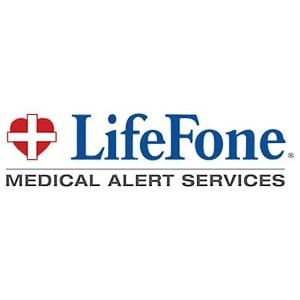Fall Prevention 101
Your friend Betty tripped over a kitchen rug when she went to do the dishes and ended up in the hospital. You strongly considered switching to paper plates, and you worried that even routine, daily activities could cause a fall that might result in hip fractures or other broken bones. Yet at the same time, you want to stay active for as long as possible. It’s a pickle, that’s for sure.
You might not feel comfortable admitting that you have a fear of falling, but don’t be embarrassed—you’re not alone. According to the National Council on Aging, more and more people over the age of 65 share this concern. After all, 25% of Americans 65 and older fall each year, and fall injuries are one of the leading causes of death for older Americans.1
Fortunately, there are plenty of simple interventions to prevent falls.
1. Talk to Your Doctor
It’s not just a line from a pharmaceutical ad—talking to your primary care doctor is critical to understanding your fall risk factors because they know your medical history and the medications you’re taking.
- Chronic conditions like diabetes, thyroid disorders, heart problems, and nerve damage (to name just a few) can affect your coordination, balance, and gait.
- Your medication might also have side effects like sleepiness, dizziness, reduced muscle strength, or temporary disorientation that can lead to a fall.
Be proactive.
At your next physical assessment, say, “Okay, doc. I’ve heard that people fall a lot when they get to my age. What are my risks?”
- Ask if any of your health conditions or medications might mess with your balance.
- Get your annual physical, and have your vision, hearing, and blood pressure checked regularly.
- Using preventative maintenance to take care of your body is one of the smartest things you can do to prevent a fall.
When your doctor knows these things are important to you, they’ll be more likely to help you select medications and treatments that will keep you mobile and active for longer.
2. Create a Fall-Free Home
There are plenty of steps you can take at home to reduce fall hazards and make your space easier to navigate. So what does a fall-free environment look like?
Tips for a Fall-Free Home
- Clear floor hazards, like loose rugs, electrical cords, low furniture in walkways, and roaming cats. (Just kidding. Kind of. More on cats later.)
- Add nonslip mats to areas that might get slick, like front steps, bathtubs, and showers.
- Clear that pile of stuff on your stairs that you keep meaning to take up with you on your next trip.
- Make like a rock climber and give yourself some solid handholds for tricky spots, like stairs, showers, and toilets. Make sure they’re nice and secure.
- Light it up! Add night-lights to hallways, bedrooms, and bathrooms so you don’t have to fumble through the dark during those midnight bathroom breaks and snack runs.
Check out our senior safety guide for more tips on injury prevention at home.
For extra lighting: GE 3-in-1 LED Power Failure Light, Flashlight, and Night-Light
We like the GE 3-in-1 lights for added nighttime lighting. They’ll come on automatically if you ever lose power, and you can unplug them from the wall for use as a flashlight.
GE 3-in-1 LED Power Failure Light, Flashlight, and Night-Light
- LED lights
- No batteries required
- Automatic light sensors
3. Dress for Success
Before you have to trade your favorite dress or slacks for a hospital gown, consider a more practical wardrobe. Think good grip and good fit.
Make sure your footwear is secure (time to bid farewell to flip-flops) and has a sturdy sole with good traction. If you’re a creature of comfort and prefer stocking feet around the house, consider wearing socks with grip treads on the bottom.
Wear clothes that fit well, don’t drag on the ground, and stay out of your way when you move.
Pro Tip
4. Get Active
Why on earth would you want to get up and move more if you’re worried about falling? We know it seems counterintuitive, but older individuals who engage in physical activity through community exercise classes find that they enjoy better balance and are 35%–40% less likely to suffer a fall.2 In fact, evidence-based fall prevention programs are designed specifically for older adults who are concerned about their risk of falling.
- If you want to take the more traditional fitness route, check your community for gentle mindfulness exercise classes like tai chi or yoga.
- For evidence-based fall prevention training, look for programs like Stepping On or the Otago exercise program, which are designed specifically for older people. You don’t even have to be steady on your feet to participate.
- Classes like A Matter of Balance let you do all of your exercises sitting down to ensure your comfort and safety as you participate. These classes also teach specific strategies to minimize your risk of falling so you can learn about the little things you can do every day to protect yourself against falls and increase your mobility.
5. Consider a Medical Alert System
Sometimes the fear of a thing causes more problems than the thing itself. If you’re finding that your nightmares often include images of the lady on the kitchen floor crying, “Help! I’ve fallen and I can’t get up!” then it might be time to consider a medical alert system.
Fortunately, medical alert systems have changed quite a bit since the I’ve-fallen-and-I-can’t-get-up lady was on the air. While some systems still have the traditional base unit and bulky medical pendant, many systems now offer emergency help buttons that look like regular jewelry or watches. You can also choose between a medical alert with GPS that you can take with you when you’re out and about, or a home unit that can give you some added security when you’re around the house.
| Company |
| Base Monthly Price |
| Fall Detection |
| Standout Feature |
| Learn More |
|
Best for Home
|
Best for On the Go
|
Best for Budget
|
 |
 |
 |
| Medical Guardian | LifeFone | Bay Alarm |
| $29.95 | $24.95 | $19.95 |
| ✓ Yes |
✓ Yes |
✓ Yes |
| Discreet Wearables | App-only plans | Multilingual services |
| View Plans | View Plans | View Plans |
6. Be Aware
Sometimes, staying safe is just using common sense.
- Take your time when getting up and down from a couch or a chair.
- Use handrails on stairs and in the bathroom, and don’t hop up on a chair or a table to reach something high.
- Keep items you need in easy-to-reach spots, and avoid carrying too much stuff at one time.
If you have pets
If you have pets—like cats that are convinced they’re starving and thus like to weave through your legs as you’re trying to walk into the kitchen—be aware of their location as you move through your home. Make sure you can always see the floor or ground in front of you, and avoid walking on wet or icy surfaces.
If you’re unsteady on your feet
If you know you’re unsteady on your feet, make yourself a little nest with everything you need, like the remote control, your phone, important medications, snacks, and a drink. That way you can stay in one spot longer and reduce your risk for falls. This is especially important at bedtime so you don’t have to wander around at night when it’s dark and you’re more tired.
Other Tips
- If you have a medical alert system, wear your pendant.
- If you have hearing aids or glasses, wear them.
- If you have a walker or a cane to help keep you steady, use it.
- Take your medications and vitamins (don’t forget that calcium for strong bones!) and if you forget, set a reminder on your phone or ask a friend, family member, or medical alert agent to remind you.
It’s okay to enlist the help of loved ones in your fall prevention strategies. They probably don’t want to see you rocking a hospital gown either. (Have you seen the price of flowers in hospital gift shops?) Remember, it’s the little habits that keep you healthy and safe.
For more info on how to stay safe at home, check out our senior safety FAQ.
FAQs
My doctor said something about “fall prevention interventions.” What does that mean?
We know it sounds scary, but don’t worry, it isn’t like an addiction intervention you see on TV. The term refers to all the things we’ve listed here—things you can do to reduce your risk of falls.
What is a risk assessment tool?
A risk assessment tool is a screening process used by your doctor to determine your risk of falling based on your specific risk factors and physical challenges, like visual impairment or low blood pressure. Risk assessment tools are usually created using trial participants and have been found to be very effective for creating more tailored interventions to prevent falls.
How do I talk to an aging loved one about the risk of falls?
A great way to begin is to encourage them to meet up with other older adults in their community at an exercise class or fall prevention program. Your loved one will get the education they need to stay safer, and they’ll have the opportunity to connect in a positive way with others facing the same lifestyle changes they are. Exercise and community involvement are just a few of our many recommended tools for senior independence.
Related Pages on SafeWise
- Senior Safety Frequently Asked Questions
- Home Safety Tools That Provide Independence for Senior Caregivers
- Room-by-Room Guide to Senior Home Safety
- The Best Medical Alert Systems
- Best Safety Devices for Seniors
Sources:
- National Council on Aging, “Falls Prevention Facts”
- National Council on Aging, “Evidence-based Falls Prevention Programs”
The post How to Prevent Falls appeared first on SafeWise.
Article source here: How to Prevent Falls

No comments:
Post a Comment